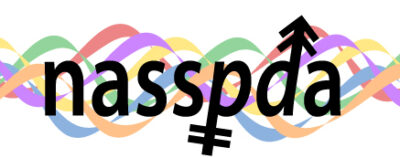Judging & Judges
Originally published in 2017 NASSPDA Newsletter
Posted: January 6, 2022
By: Benjamin Soencksen
The formation of NASSPDA was prompted by calls for unified standards of same-sex competitions. From event to event, categories, levels and procedures differed, making it difficult for participants following any strategies for their own development.
Part of controlling the standard of NASSPDA sanctioned events is that all invited adjudicators have to be approved by NASSPDA. There are distinct differences to consider in judging a NASSPDA from a mainstream event. When formulating the qualification requirements and judging criteria for NASSPDA’s Competition Rules, these differences were a main focus.
By being presented with different gender configurations and the possibility of switching lead within a dance at NASSPDA sanctioned competitions, adjudicators are faced with differing interpretations of these dances and presented role perceptions from mainstream.
Having a clear understanding of our community’s dynamics is key to being a fair and effective judge at NASSPDA’s events. It is therefore deemed helpful to have experience within our community, by having actively participated either as a dancer, teacher and/or activist.
NASSPDA created a committee with four members of the elected Directors of the Board and two non-Board members that have had a longstanding and successful engagement within the community as a competitor. Adjudicators that have been invited to judge at a NASSPDA sanctioned event or want to be added to NASSPDA’s roster of approved judges have to submit an application to the committee, citing information on prior experience within the dance community and our community at large. Once an application has been received, the committee discusses the merits of the applicant (often, a member of the committee can contribute personal experiences with the applicant) and formulates a recommendation for approval or disapproval by NASSPDA’s Board of Directors. Based on their background, the approval for some adjudicators is limited to a specialty, a particular style of dance.
As we all know, judging dance is quite a subjective way to achieve results. There are no distances or times to be measured. It’s comparative judging, taking into account some of the basic, more calculable aspects, such as basic rhythm, characteristic step patterns for a dance and style and the technical execution, as well as those not as clearly definable, such as musicality and presentation. That is why at titled events, whose results are deemed of greater importance to the competitors, NASSPDA requires a minimum of five judges, guaranteeing a wider range of opinions, and IFSSDA a minimum of seven judges at an international event..
Adjudicating partner dancing takes a keen eye for all the elements mentioned above as well as for the counterbalance within a couple, signifying partnering (as supposed to just dancing next to each other), which differs from qualifying other forms of dance. As with teaching, not every talented, successful dancer makes a good candidate for this job, which is why NASSPDA’s Judges Committee tries to take into account all aspects of the applicants’ engagement in our community and which is why NASSPDA states in its rules regarding the qualifications necessary, either a “license for judging from an official dance sport association” or “prior experience competing in same-sex competitions at top level,” that “NASSPDA reserves the right to reject a judge, even if all criteria are met, and to accept a judge not meeting all the listed criteria.”
Additionally, at most NASSPDA sanctioned competitions, the head judge will have a meeting with all invited adjudicators prior to the start of the event stressing all the points that make NASSPDA events special, such as that competitors will present a great variety of body shapes and gender identification, which shall not taint the judges’ perception and assessment of dancing skills; that a change in lead can change the characterization of a dance by breaking a harmonious continuum and, if done well, shall be reflected in a higher score; and that the “student” identified in a student/teacher category shall be the only one judged, not the “teacher.” The head judge typically cites examples and reasons for these notes and ensures application throughout the event, which includes giving advice on good grading practices based on the field of dancers present as well as making judgement calls when an unusual situation presents itself.
All NASSPDA approved adjudicators have to be active members of NASSPDA at the time of judging a NASSPDA sanctioned event, unlike the participating competitors. Everyone though is encouraged to become a member, so that you have a voice within your community by electing your representatives and adding to the weight of their engagement.
